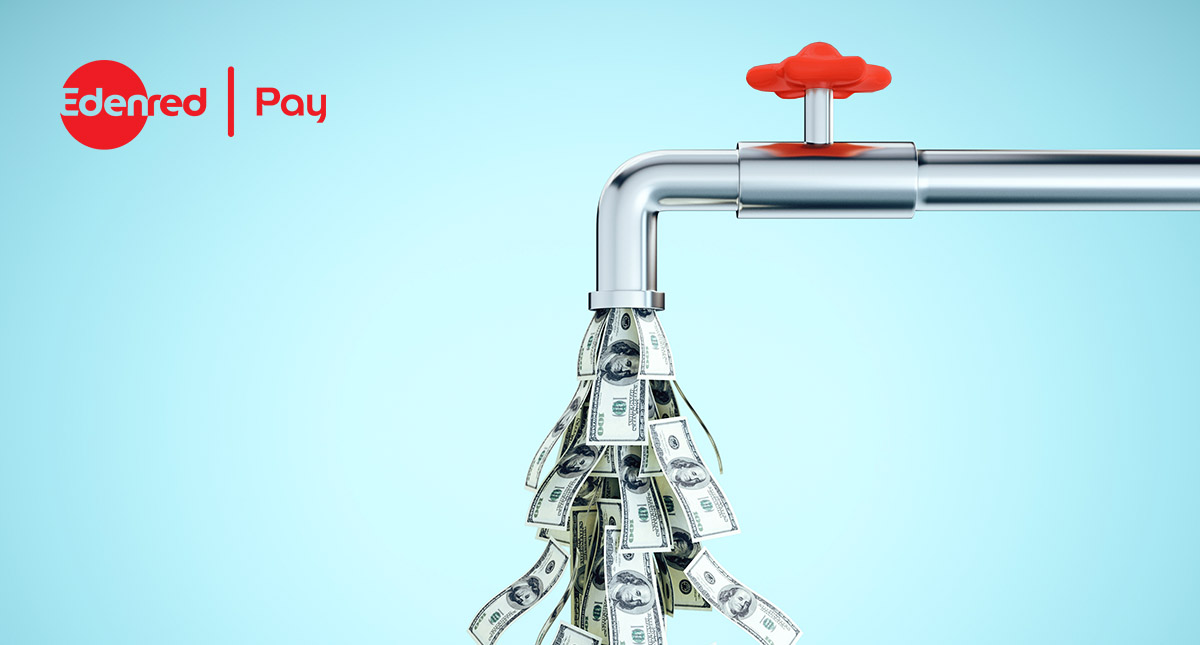The combination of rising interest rates, sky-high inflation, unpredictable global supply chains, and a challenging labor market is creating economic uncertainty for businesses of all sizes.
While economists and pundits argue over whether the economy is in for a “soft landing,” a “hard landing,” or a narrow escape of a recession, it’s clear that finance leaders must be ready for anything.
Maintaining a healthy cash flow is paramount in turbulent economic times like these.
Invoice-to-pay automation – integrated platforms that automate, optimize, and monetize the invoice-to-pay cycle, from invoice receipt through reconciliationThe process of matching financial records—such as payments and invoices—to ensure accuracy in accounting and reporting. and reporting – offers finance leaders a powerful tool for managing cash flows, no matter the economy. This article shows you how.
Top cash flow challenges in uncertain times
Businesses typically face significant cash flow challenges during times of economic uncertainty.
- Decreased revenues. A slowdown in economic activity can put the squeeze on sales and revenues and directly impact a company’s ability to generate cash flow. Many customers may delay or default on payments, putting more strain on cash flow. And some customers may go bankrupt, leaving a business with uncollectible receivables and potential write-offs.
- Limited access to capital. Lenders may become more cautious during uncertain economic times, making it harder or more costly for businesses – especially small and mid-sized ones – to obtain the capital they need to support their operations and growth. Market volatility also can impact the cash reserves of businesses with a lot of money tied up in stocks and bonds. And delayed or canceled investment projects may impact long-term cash flow potential.
- Difficulty planning for customer demand. It’s hard for businesses to accurately predict customer demand in uncertain economic times. Over-producing goods ties up capital, while under-producing goods can create cash flow issues because of reduced sales and revenues.
- Supply chain disruptions. Economic uncertainty can further disrupt global supply chains. Delays in receiving materials and inventory can result in increased carrying costs and the potential for lost sales if a business cannot meet customer demand. Unpredictable supply chains also can drive up costs for raw materials, labor, utilities, and other essential inputs, putting pressure on cash flow if the business is unable to pass these costs on to customers.
Improving cash flow management helps business navigate these challenges.
That’s where invoice-to-pay automation comes in.
What is invoice-to-pay automation?
Invoice-to-pay automation is an integrated platform that automates, optimizes, and monetizes the entire invoice-to-pay cycle. Invoice-to-pay platforms replace the hodgepodge of loosely integrated manual and semi-automated processes that most businesses use to receive, approve, and post invoices and pay suppliers. And the best invoice-to-pay platforms seamlessly integrate with a buyer’s enterprise resource planning (ERP) application or accounting softwareA system for recording and managing a company’s financial transactions, often integrated with ERP and AP solutions. package, and bank.
Here’s how an integrated invoice-to-pay platform typically works:
- Invoice receipt. AP bots automatically collect invoices that suppliers submit via email, secure file transfer, or supplier portalA self-service web portal for suppliers to submit invoices, check payment statuses, and update account information.. Invoices sent via the U.S. Postal Service are collected from P.O. Box on behalf of the buyer and converted into digital format for processing. Some invoice-to-pay platforms include a portal for suppliers to submit invoices electronically.
- Intelligent data captureAI-powered technology that extracts, validates, and structures data from invoices or documents with high accuracy.. Optical character recognition (OCR) and other technologies and processes are used to extract the invoice number, vendor details, due date, amount, and other header and line-item details from supplier invoices. The best invoice-to-pay platforms capture invoice data with 99.5 percent accuracy, virtually eliminating manual data entry.
- Invoice matching. The captured invoice data is validated and matched against purchase order (PO)A formal document issued by a buyer authorizing the purchase of goods or services under agreed terms. R or delivery receipt information residing in the buyer’s ERP or accounting softwareA system for recording and managing a company’s financial transactions, often integrated with ERP and AP solutions. package. Matched invoices are posted directly without any human operator intervention.
- Invoice approval. Unmatched invoices or invoices requiring review – such as high-dollar invoices or invoices from strategic suppliers – are digitally routed to the appropriate individual or department, based on pre-defined business rules or factors such as the vendor.
- Exceptions management. Invoices flagged as exceptions are reviewed. Online tools enable AP staff to collaborate with internal and external stakeholders to resolve exceptions. Some invoice-to-pay providers have subject matter experts who will assist in resolving exceptions.
- Approved invoices are posted directly to the buyer’s ERP or accounting softwareA system for recording and managing a company’s financial transactions, often integrated with ERP and AP solutions., without the need for re-keying. Synchronizing invoice data automatically with an ERP or accounting package ensures that the data is recorded accurately and in a timely manner.
- Supplier payments. Invoice-to-pay platforms enable buyers to initiate payments to suppliers in the method that the buyer and supplier prefers, including virtual cards, ghost cards, ACH, ACH+, and check. Buyers earn cash-back rebates on virtual cards and ACH+ payments.
- Reporting and business intelligence. Invoice-to-pay platforms include tools for the real-time monitoring, tracking, and reporting of invoice and payment status, and key metrics.
Automating the invoice-to-pay lifecycle provides businesses with significant benefits:
- Reduced costs. Compared to AP departments with little or no automation, highly automated AP departments spend less than one-fourth as much to process a single invoice, the Institute of Finance and Management (IOFM) reports. And digital payments cost a fraction as much as paper checks and may provide cash-back rebates that are not available with checks.
- Improved efficiency. Highly automated AP departments process eight times as many invoices per full-time equivalent as their peers with little or no automation, IOFM finds.
- Faster invoice approvals. Compared to AP departments with little or no automation, highly automated AP departments take one-fourth the time to approve an invoice, IOFM reports.
- More discounts. Highly automated AP departments capture seven times as many early payment discounts as their peers with little or no automation, The Hackett Group says.
- Fewer payment errors. Highly automated AP departments experience less than half as many payment errors as their peers with little or no automation, according to IOFM.
All these benefits are compelling. But one of the most tantalizing benefits of an invoice-to-pay platform is how the technology can help a business manage its cash flows in uncertain times.
5 ways to improve cash flow management
An integrated invoice-to-pay platform improves cash flow management in five ways.
- Frees up cash on existing revenues. Invoice-to-pay automation enables businesses to do more with less. With labor representing 60 percent of the median AP department’s total budget (per APQC benchmarks), the labor savings from invoice-to-pay automation can add up fast. The efficiencies provided by integrated invoice-to-pay platforms also enable AP departments to scale to support business growth, without the need to hire additional staff.
- More early payment discountA financial incentive is provided by a supplier to encourage early payment of invoices. opportunities. Invoice-to-pay automation eliminates the friction that can delay payments to suppliers. Accelerating invoice approvals creates more opportunities for businesses to capture early payment discounts. While taking advantage of every discount may not make sense, treasurers will appreciate having the opportunity.
- Enhanced visibility into cash flow and corporate spending. Invoice-to-pay platforms put smart insights at the fingertips of the stakeholders who need them, when and where they need them. Graphical dashboards display crucial metrics in real time. Drill-down capabilities enable finance leaders to uncover cash flow trends and identify potential issues. Mobile access keeps decision-makers in-the-know while on-the-go. And exports get AP data downstream fast. And ad hoc reports let finance leaders quickly adjust to changing business needs. The visibility provided by invoice-to-pay platforms also improves cash forecasting.
- Cash-back rebates. Invoice-to-pay automation enables buyers to earn cash-back rebates on payments made to suppliers using virtual cards and ACH+. Cash-back rebates can offset the overhead of an AP department. Some AP departments earn enough from cash-back rebates to return value to the business – effectively transforming the AP function into a profit center.
- Extended payment terms. Best-in-class invoice-to-pay platforms have built-in tools for rationalizing payment terms to suppliers. Extending payment terms to suppliers provides businesses with more cash to fund daily operations and to invest in growth initiatives.
These benefits collectively contribute to more efficient cash flow management.
Take control of your cash flow
Effective cash flow management is crucial to a company’s growth and survival, especially in uncertain economic times. Integrated invoice-to-pay platforms provide finance leaders with a powerful tool for managing cash flows. By freeing up cash on existing revenues, creating more opportunities to capture early payment discounts, providing enhanced visibility into cash flow and corporate spending, delivering cash-back rebates, and extending payment terms, invoice-to-pay platforms help businesses maintain a healthy cash flow and thrive during economic turbulence.

Ready to elevate your B2B payments?
Whether you are automating for the first time, ready to refresh your existing technology, or looking for ways to complete the ‘last mile’ of automation, Edenred Pay can help. Let’s chat about your needs.







